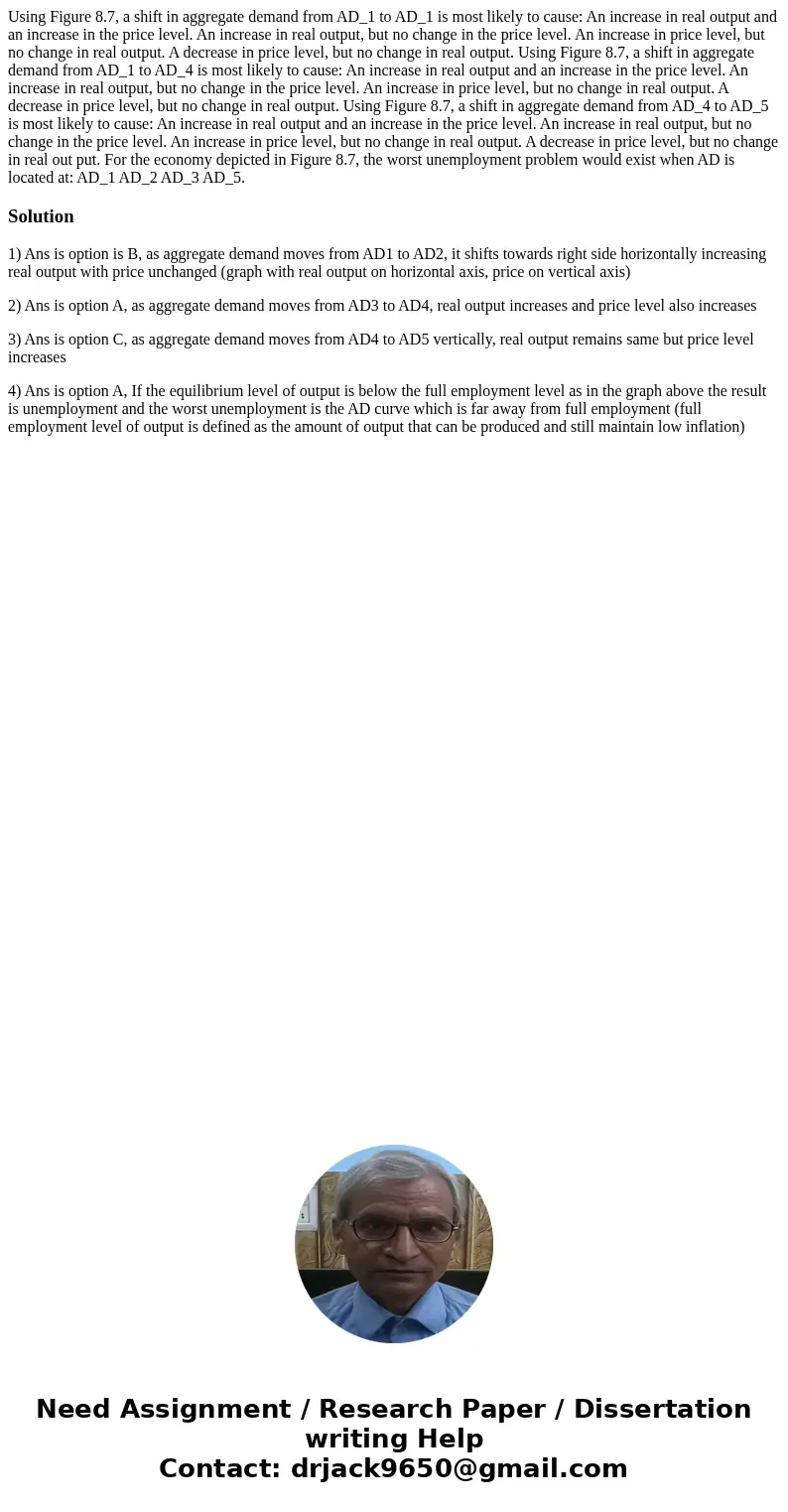Using Figure 8.7, a shift in aggregate demand from AD_1 to AD_1 is most likely to cause: An increase in real output and an increase in the price level. An increase in real output, but no change in the price level. An increase in price level, but no change in real output. A decrease in price level, but no change in real output. Using Figure 8.7, a shift in aggregate demand from AD_1 to AD_4 is most likely to cause: An increase in real output and an increase in the price level. An increase in real output, but no change in the price level. An increase in price level, but no change in real output. A decrease in price level, but no change in real output. Using Figure 8.7, a shift in aggregate demand from AD_4 to AD_5 is most likely to cause: An increase in real output and an increase in the price level. An increase in real output, but no change in the price level. An increase in price level, but no change in real output. A decrease in price level, but no change in real out put. For the economy depicted in Figure 8.7, the worst unemployment problem would exist when AD is located at: AD_1 AD_2 AD_3 AD_5.
1) Ans is option is B, as aggregate demand moves from AD1 to AD2, it shifts towards right side horizontally increasing real output with price unchanged (graph with real output on horizontal axis, price on vertical axis)
2) Ans is option A, as aggregate demand moves from AD3 to AD4, real output increases and price level also increases
3) Ans is option C, as aggregate demand moves from AD4 to AD5 vertically, real output remains same but price level increases
4) Ans is option A, If the equilibrium level of output is below the full employment level as in the graph above the result is unemployment and the worst unemployment is the AD curve which is far away from full employment (full employment level of output is defined as the amount of output that can be produced and still maintain low inflation)

 Homework Sourse
Homework Sourse